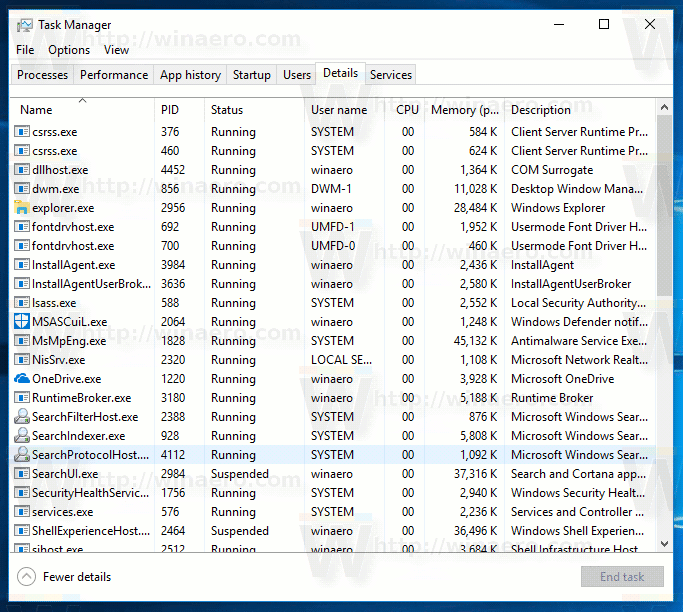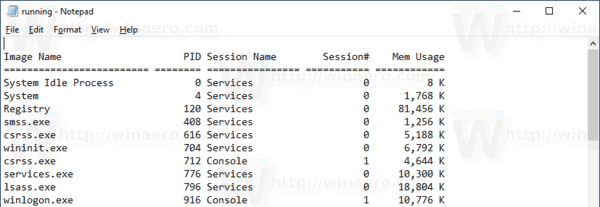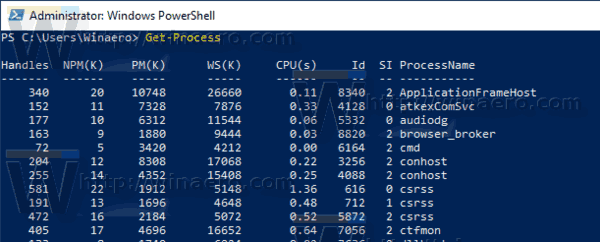When you start an app, the operating system creates a process for the executable file of the app. It contains the program code and its current activity. Windows assigns a special number known as Process Identifier (PID) which is unique for every process. If you want to check which apps you have running at a given moment, you can save the list of running processes to a file.
Advertisеment
Saving running process to a file is not a problem when you are using some third-party process manager. For example, the well-known process manager from Sysinternals, Process Explorer, allows exporting the list of running apps.
Out of the box, Windows 10 offers a few tools to manage processes. The only GUI tool is Task Manager, which comes with many handy options. You can use it to check which apps are active at a moment of time:

You can copy details for a selected process or service quickly. See:
How to copy process details from the Task manager in Windows 10
However, this doesn't work when you need to copy details for several or all processes at once. Task Manager doesn't allow selecting more than one row in the grid.
To bypass this limitation, we can use tasklist, a console app that prints the list of running processes to a command prompt window. Note: Some processes are running as Administrator (elevated). I suggest you to open an elevated command prompt instance to run the tasklist app.
To save running processes to file in Windows 10, do the following.
- Open a new command prompt as Administrator.
- Type the following command to save the list of running processes to the file:
tasklist > "%userprofile%\Desktop\running.txt"
Change the file name and its path according to your preferences.

- By following the example above, you will get a text file named "running.txt" in the Desktop folder. It will contain the list of currently running processes. Open it with your text editor app, e.g. Notepad.

Tip: Tasklist allows applying filters to its output. The following command will show processes only for Session 0:
tasklist /fi "Session eq 0"
Run tasklist with the option /? (tasklist /?) to see the available options.
Alternatively, you can use PowerShell. It comes with a special cmdlet Get-Process.
Save running processes to a file with PowerShell
- Open PowerShell. If required, run it as Administrator.
- Type the command
Get-Processto see the list of running processes.
- To save it to a file, run the command:
Get-Process | Out-File -filepath "$Env:userprofile\Desktop\running.txt"
- This will create a new text file "running.txt" in your Desktop folder.

That's it.
Related articles:
- How to Kill a Process in Windows 10
- What is Registry Process in Windows 10
- How to Find Which User Runs a Process in Windows 10
- How to Change Process Priority in Windows 10
- See names and values of environment variables for a process in Windows 10
- How to see if process is 32-bit on Details tab of Task Manager
- How to end a process quickly with Task Manager in Windows 10
Support us
Winaero greatly relies on your support. You can help the site keep bringing you interesting and useful content and software by using these options:
